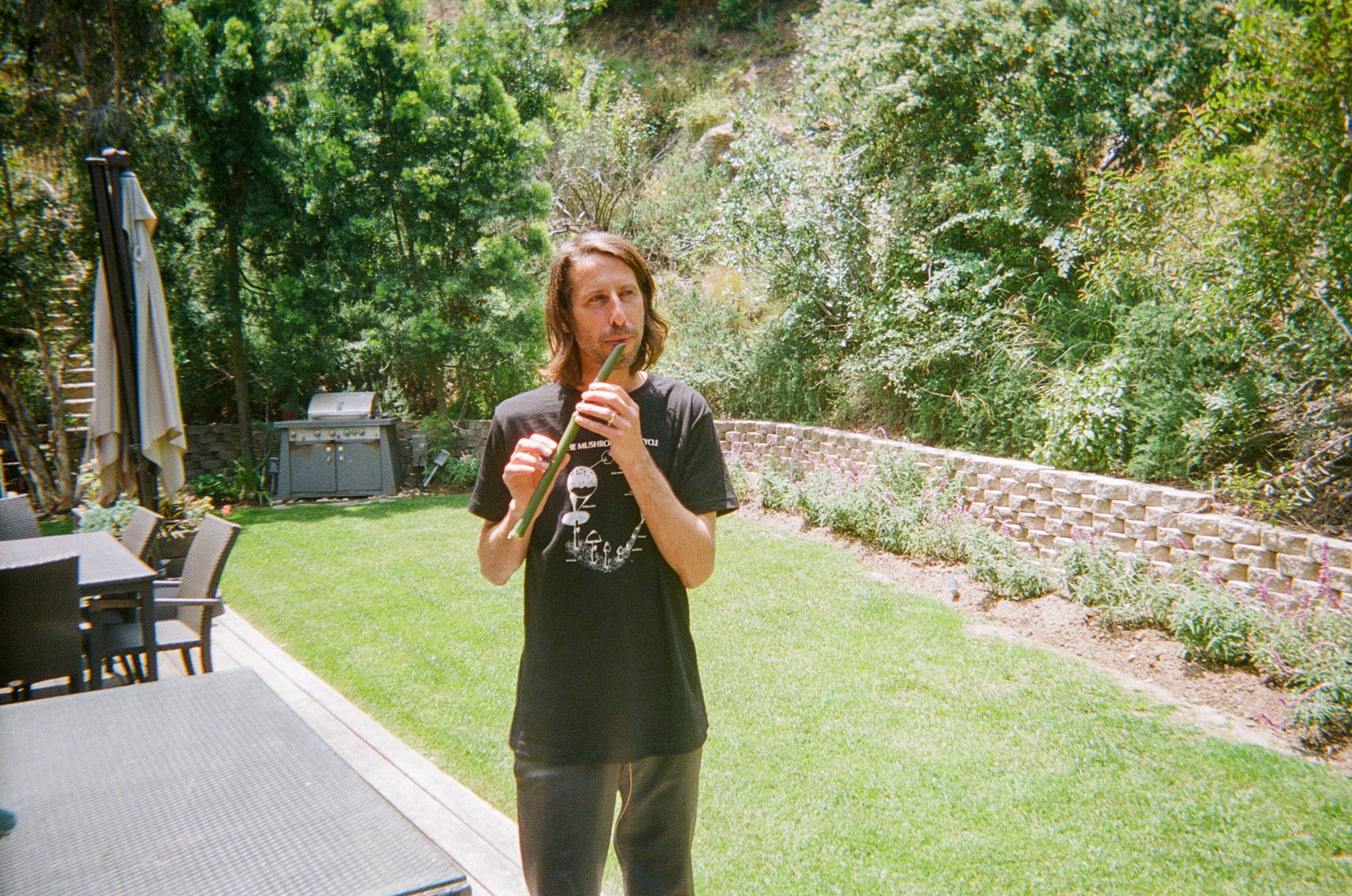
Stefan and I are lounging in baggy, blue and white striped chairs on the deck at the SoHo House in Malibu. Below us, soft wave peaks draw and erase themselves in the ocean. It’s about noon on a Wednesday and we’re eating brunch — vegan artichoke pizza for him, sea bream tacos for me — while his dog Leland sits by waiting for table scraps.
The SoHo house is a members only club marketed to “those in the creative industries and people with a ‘creative soul,’” which includes Stefan. The owners enjoy turning down membership applications from overt celebrities such as “The Real Housewives” stars and Kim Kardashian, who’s applied multiple times. They also don’t allow dogs, but Stefan kept bringing Leland anyway until the staff stopped bothering to tell him otherwise.
“I was thinking about your tree question,” Stefan says, referring to a point I made the other day to try to prove the existence of time. That’s because Stefan had told me he doesn’t believe in time.
My argument was that if you can look at a tree when it’s first planted, then come back to it at some point in its life and see that it grew bigger, isn’t that evidence that time exists?
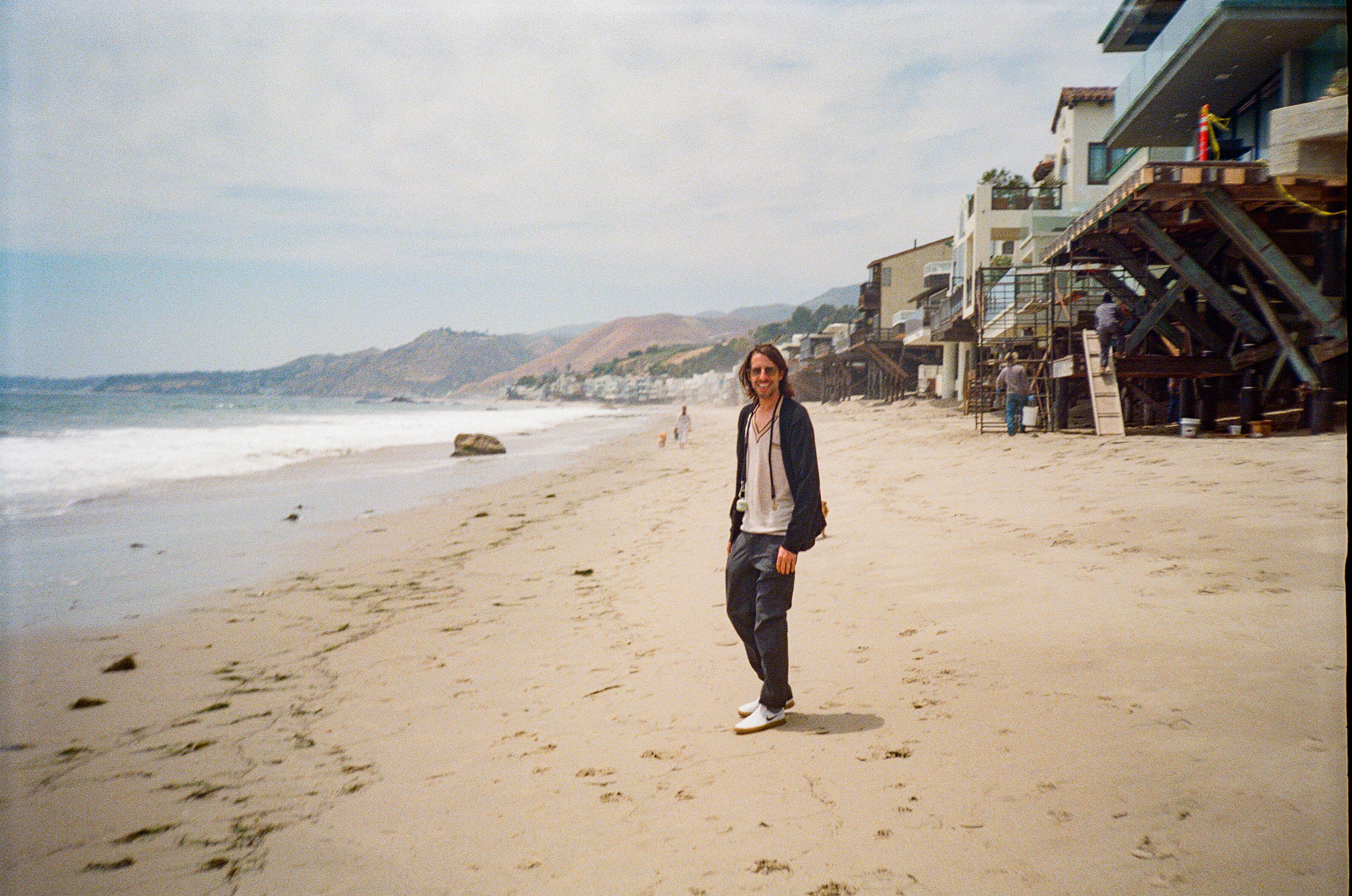
“I think it’s just an expression of entropy,” Stefan says, referring broadly to the way scientists talk about the amount of energy that exists inside all objects. I guess he’s saying that the only difference between a baby tree and an adult tree is the way their internal energy is arranged, but to be frank, I don’t really know what he’s talking about. I’m not convinced Stefan knows exactly what he’s positing either, but he keeps the conversation moving and begins to point out dolphins popping up in the water.
“There’s one. There’s another one,” he says. By the end of brunch I feel like we’ve seen a dozen different dolphins.
This isn’t what I expected when I emailed Stefan a few months ago to write about his artwork. And it’s not at all typical for pro skateboarders his age (40), especially since he doesn’t skate in contests, sign energy drink deals, or launch his own brands.
Hanging out with someone who seems so comfortable living so comfortably can get annoying. But after spending five days with him from morning till night, I’ll be reminded that Stefan didn’t reach this point arbitrarily. He got here, one way or another, because he’s never been shy about following his curiosity, wherever it leads him.
Stefan grew up nowhere near Malibu. He lived in a house that his dad, Hank, built on a 120-acre plot of raw land in the northern California town of Vacaville. They lived somewhat off the grid — his dad dug a well for water, they used a gas-powered generator for electricity, and their TV only got three channels.
When he was five, Stefan’s younger sister, Anya, was born with a genetic disorder, Cornelia de Lange syndrome, from which she passed away in 2017. The disorder stunted her growth and prevented her from ever being able to speak, but Stefan spent many afternoons babysitting her to VHS tapes of “Barney.”
The property’s entrance was off a long country road, from where it was another 30-minute drive up the mountains to get to their house. Years later, when Stefan’s parents would get divorced, he and his mom, Margi, moved into a house near the country road, and every other weekend Stefan would get driven up to visit his dad.
Stefan took advantage of the remoteness. He mostly ran around his endless backyard, riding his bike off dirt jumps, shooting tin cans with a rifle, and doing whatever else a kid in the country does.
Professional skateboarders like to say that becoming a pro skater was their first lifelong goal, but Stefan initially aspired toward art. “My half-sister taught me what a starving artist is…and I just thought that was really cool,” he said. “So when people were like, ‘What are you gonna be?’ I was like, ‘I’m gonna be a starving artist.’” Thankfully, only the better half of that sentiment would come true.
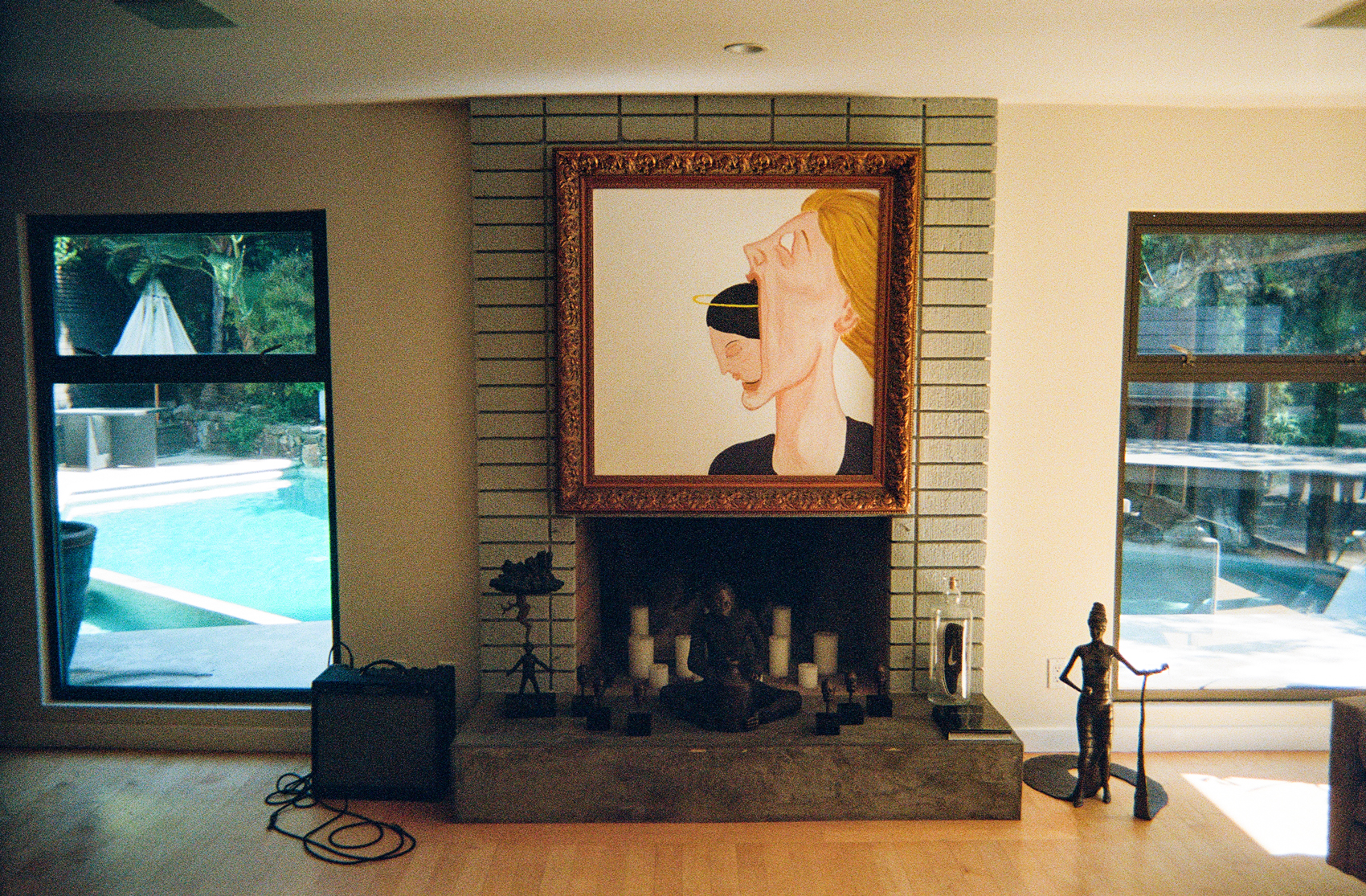
Drawing, painting, and sculpting were all encouraged and explored, and his mom, who he admits is a bit of a pack-rat, began keeping all of his creations. “My mom even has a framed painting from when I was four,” he told me.
So when Stefan discovered skateboarding at age 12, it didn’t completely dominate his life. In between learning the basics on his friend’s driveway (concrete can be a rarity in the countryside) he kept painting and drawing. In high school he found art classes to be the only subject he really cared about, and he briefly joined a graffiti crew called RTS (Running The Show, Represent The Sickest, Representing True Stoners, etc.) although he never got the hang of spray paint.
“It’s cool if you’re good at it, but if you suck at it, it’s just vandalism,” he said.
He’d kept up skating too, and by his late teens he was going on day trips into Sacramento and San Francisco with friends. He started getting noticed, and when it came time to graduate high school, which he did at his mom’s begging, he was ready to give pro skateboarding a shot.
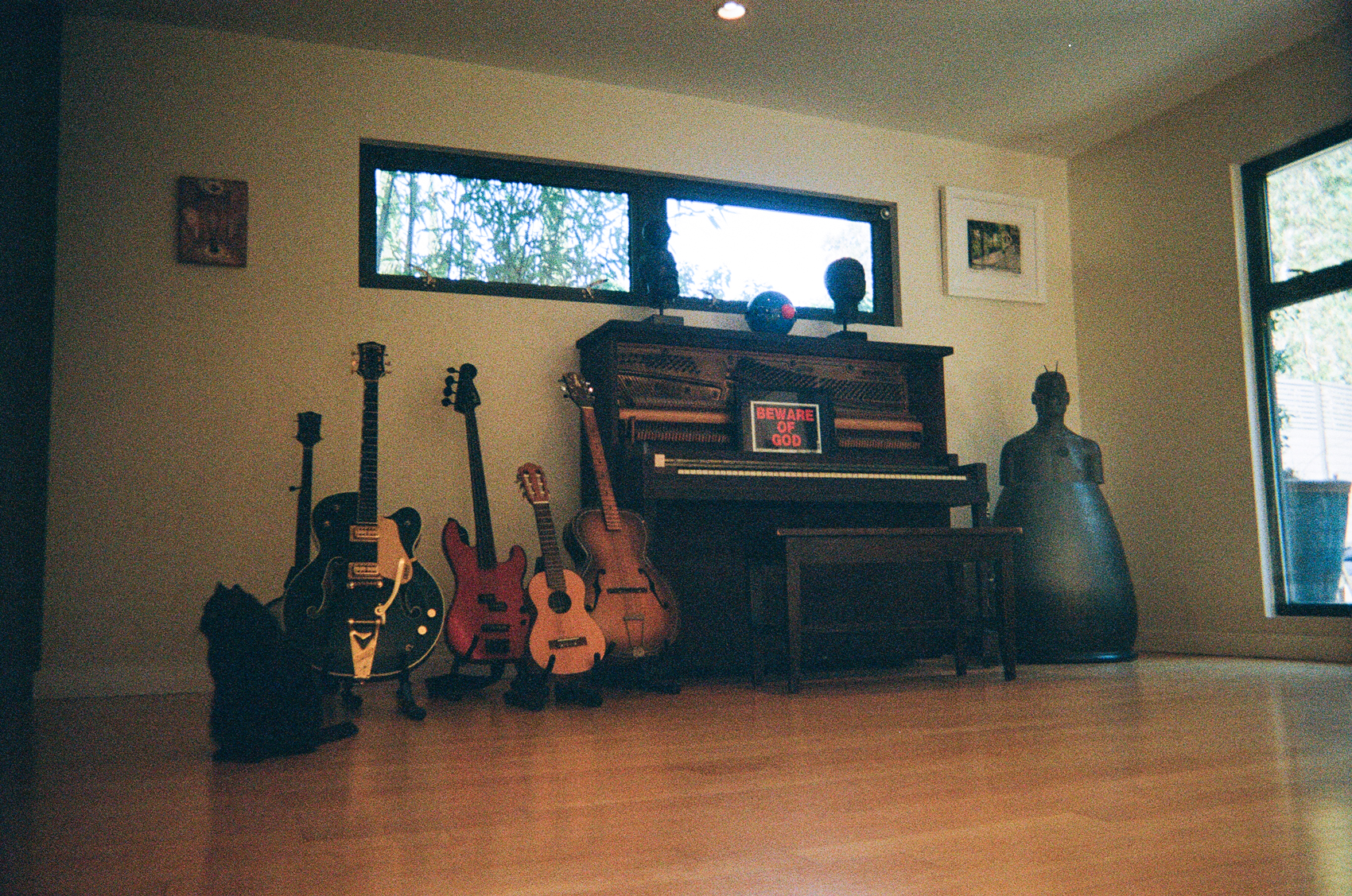
At first, living in skate houses and spending weeks in 10-seater vans, Stefan couldn’t develop or publicize his art. He carried notebooks to draw in, but he said that the other guys he skated with — Tim O’Connor, Brian Anderson, Mark Oblow — kept more impressively detailed sketchbooks. So after establishing a skate career, complete with video parts, pro boards, and excited fans, he moved to New York City at the end of the 2000s, eager to finally have time to explore his creative tendencies.
When I visited Stefan’s house in Los Angeles — airy, sun-soaked, and tucked away in one of the hills overlooking Hollywood — it became clear why I hadn’t heard more about his artwork until he move into a converted warehouse apartment in Brooklyn: he needed the space to create it.
He often paints on big canvases — one in his living room was about 7’x5’ and he’s painted others as big as 10’x6’ — and he likes to work with messy media like wax and clay sculpting. During those years in New York, he would leave projects to dry all around the apartment and end up with plenty of supplies and paint splatter on the floor.
Stefan likes to tell stories and make jokes with his art, especially around religion and myths. In his painting, “Off Duty Jesus,” a un-haloed Jesus sits at a table held up by angels, unwinding with cigarettes and red wine. In “Horrorscope,” a giant white-haired God floats through space, blasting the earth with lightning bolts like the power-corrupted Mickey Mouse in Fantasia.
And of course, there’s the Crucifloat: a crucifix-shaped pool float that Stefan designed and sells online. The idea came from his bronze sculpture, “Relax…Jesus,” which depicts Jesus in heart-printed boxers, smoking and drinking on a similar float. The Crucifloat’s tagline is, aptly, “Float Your Sins Away.”
The pieces are critical to a degree, but they’re too playful to feel particularly anti-religious. Even Paul Rodriguez, an openly Catholic pro skateboarder, can appreciate the humor in the Crucifloat.
Stefan didn’t grow up going to any church, so when he started reading about different religions in his 20s, beginning with the Bibles he’d find in hotel rooms on skate tours, he saw the humor in interpreting religious stories literally. Now, in his work, he often imagines how the figures and beliefs indoctrinated down to us would behave if they had to live in the real world. That Stefan bears a resemblance to Jesus (lanky, long hair, likes working with his hands) may even enhance his insight.
Although his paintings and bronze sculptures have appeared in solo and group shows, Stefan doesn’t proactively sell his creations. “When you sell it you can at least cover the cost, but it’s not the main objective,” he said.
He eventually wants to make more of a financial career from his art, but he’s been slow to start. “Because I’ve had this thing with skating, I haven’t needed [to sell my art],” he said. “I have that privilege, happily.”
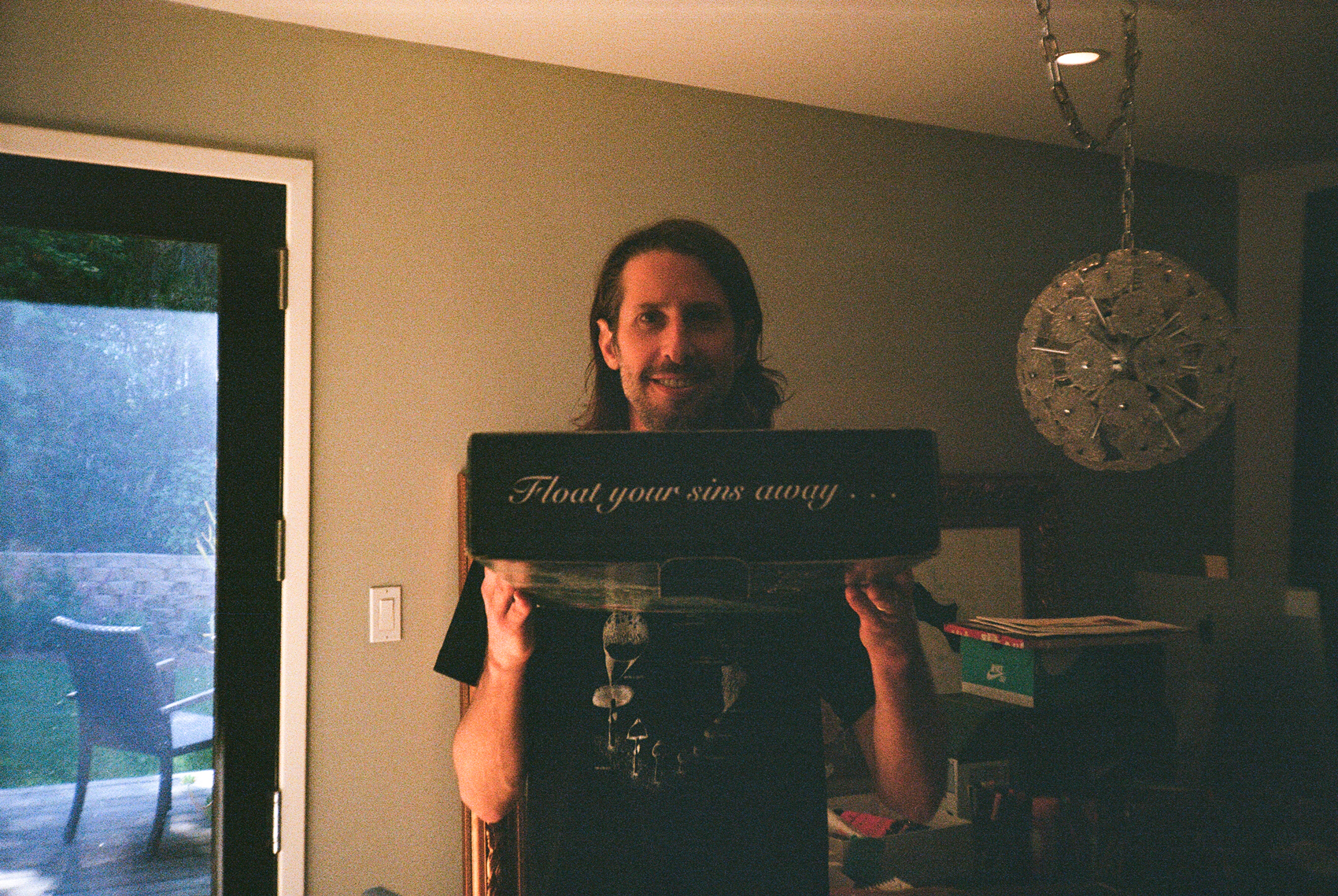
But it’s also not in his nature to put himself out there as a “professional artist.” Something will probably have to give before he really takes that route.
“The art world is crazy. People are just so weird. I don’t know if most of the people who want to buy it actually like art.”
Because Stefan is self-taught — he took a figure drawing class as an adult but became so frustrated at painting to someone else’s instructions that he quit and walked out mid-class — he takes full liberties in deciding how to interpret his work.
For instance, he has this sculpture of a woman who’s holding an apple and wearing a long snakeskin dress that looks like it’s also eating her. When I said it was clearly a nod to the Bible (Eve, the fateful apple, and the satanic serpent), his first reaction was to defend its open endedness.
“Well, she has an apple in her hand. But that could be the golden apple of Eris, the Greek goddess of discord, who didn’t get invited to the party that Zeus was having so she threw an apple into the party.”
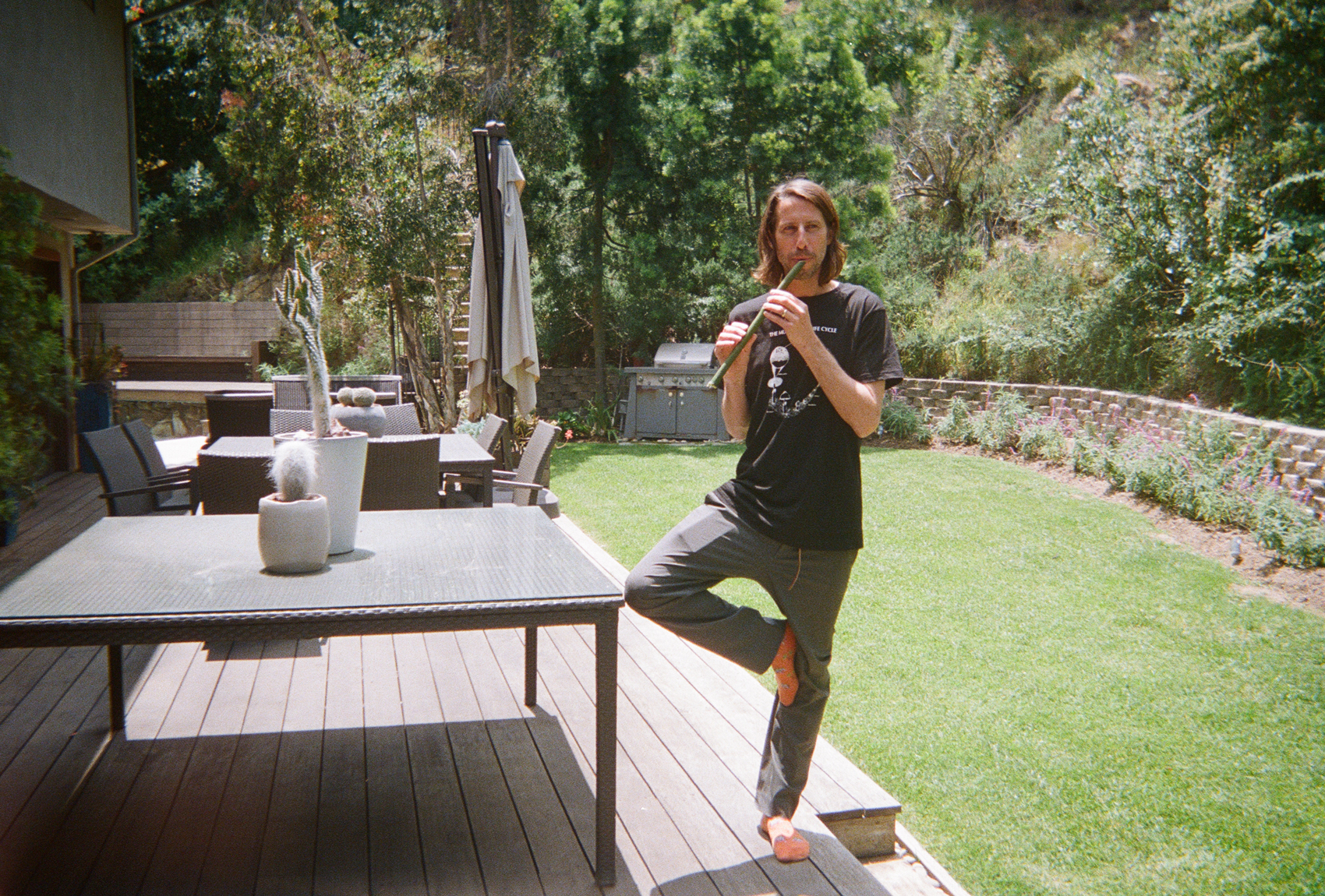
Part of Stefan, I think, just enjoys being contrarian.
One day, while he was driving us to his place, he told me he doesn’t believe in the happenstance notions of Darwinian evolution. He thinks it’s presumptuous of humans to say that every plant and animal species doesn’t have the consciousness and agency to choose how they adapt to their environments. The argument that evolution happens randomly over hundreds of thousands of years, without much decision making, just seems fishy to him.
It can’t be mere coincidence that there are both bugs that look like leaves and leaves that look like bugs, he pointed out. Those creatures probably had some amount of agency in the adaptation process.
I got the sense that Stefan is, on principle, skeptical of any theories that propose to answer grand, sweeping questions about evolution, time, or death. The thing he’s currently grappling with, and for which he reads books on religion, philosophy, and quantum physics, is that matter and consciousness are indistinguishable.
Many philosophers and physicists believe this to be true. Essentially, it means that there is no objective truth or reality, and as soon as we stop sensing the world around us, it disappears. It’s a lot, I know. But these are the types of ideas that Stefan walks around with in his head on a daily basis.
This kind of logical extremism might feel like its own cop out from being present in the world. But Stefan parses this stuff with an open mind, and I don’t think he’s preoccupied with proving himself right. He’s more interested in preserving the possibility that, in any situation, there may be alternative reasonings (even if the situation is something as basic as the concept of time).
Stefan admits that he can be stubborn, but he describes himself as entirely non-confrontational. “I’ve never been in a fight and I’m not gonna start now,” he said. “Punch me in the face, I’m not gonna punch back.”
Fortunately, his stubbornness has paid off. Especially when it came to designing his Nike shoe.
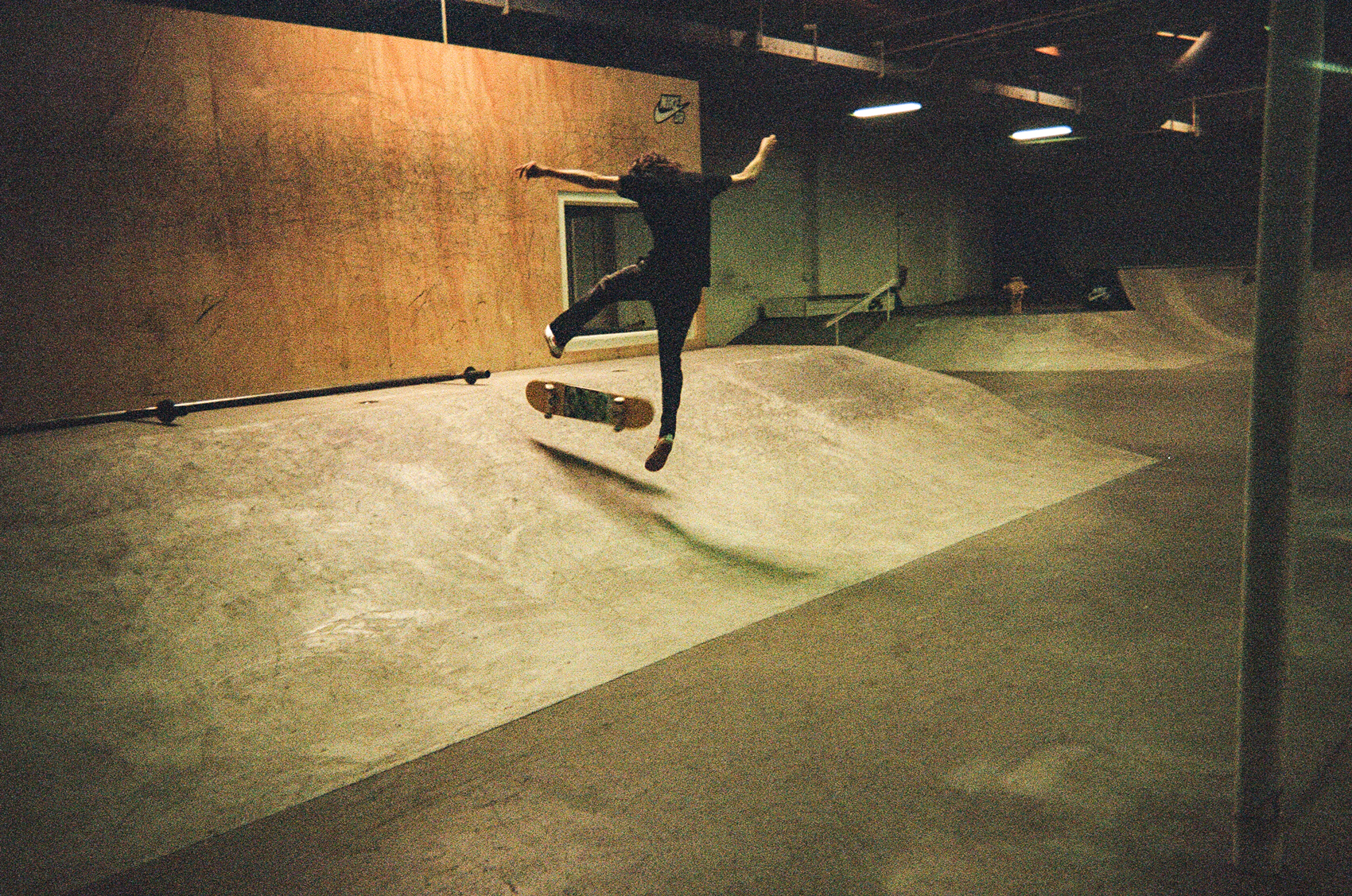
When Stefan joined Nike SB in 2006, the brand had only given one other skateboarder — P-Rod — a signature shoe. They were ready to give Stefan a shoe too, but they weren’t expecting him to be so particular about it. “There were a lot of people who were very resistant to the fact that I was even there, that I even existed,” he said.
“It went through some crazy times of people having to deal with the fact that I was right and what they wanted to happen was not happening. But if it’s gonna have my name on it, it’s gonna be the way I want.”
Stefan was tired of skating in bulky skate shoes, so during the development process, when Nike designers would show him samples with puffier elements that were more common then, he would respond with the mantra: flat toe, flat toe, flat toe.
The designers and Stefan struggled to come to an agreement, and meetings at the Nike headquarters in Oregon sometimes went nowhere. After leaving one unfruitful meeting, Stefan remembers “lying in a soccer goal, in the net, and kind of flailing my arms and legs. Maybe screaming a little bit.”
Eventually, Nike conceded, and in 2009, the Janoski — sleek, thin, like a boat shoe from the future — was born.
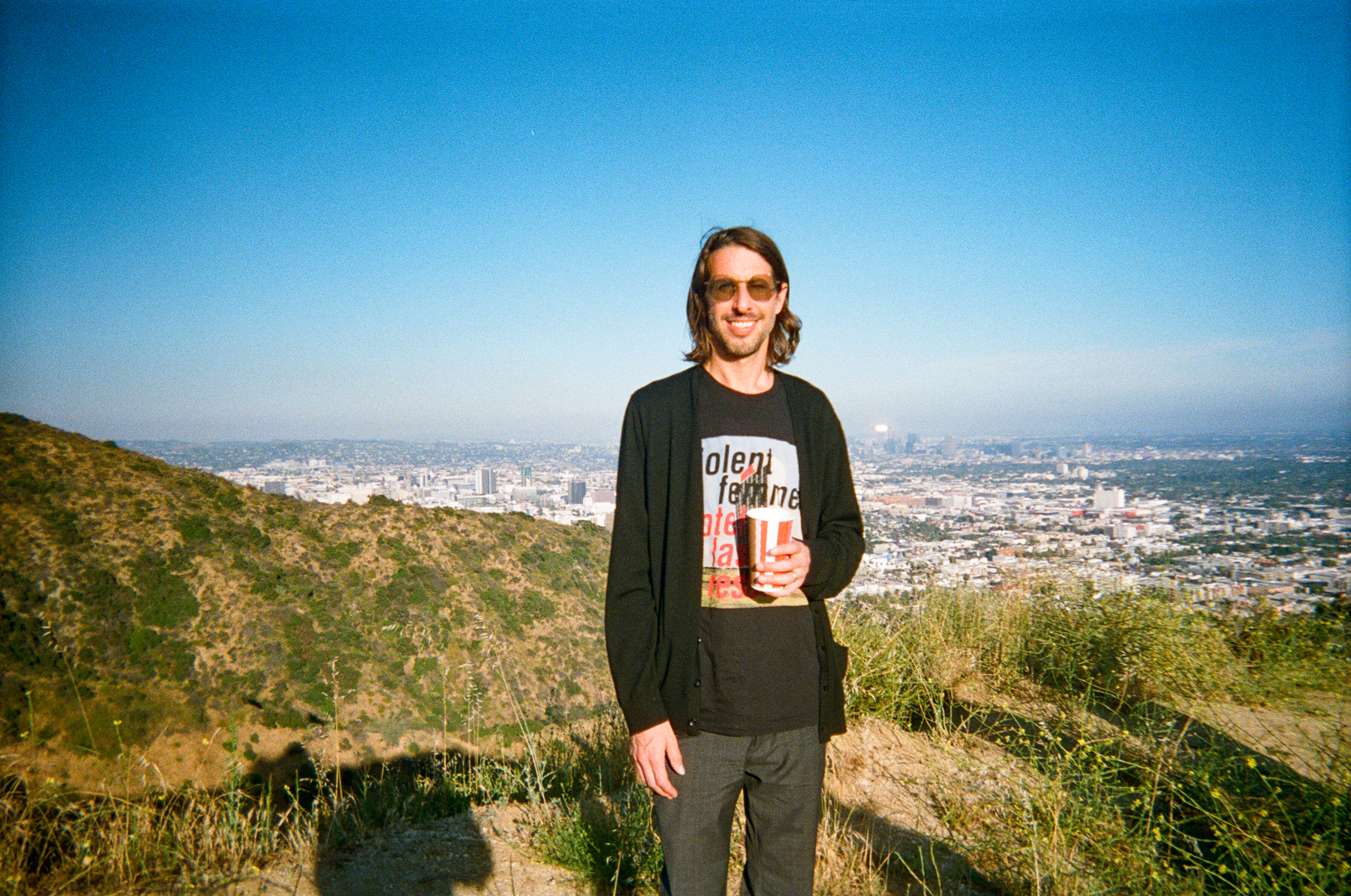
Its look was quieter than typical Nike shoes at the time, especially for Nike SB, which had been releasing a lot of hyped up Dunk colorways. It also had no air bubbles, shocks, or unnecessary technology. By then, some skateboarders had started to ditch bulkier shoes for thin ones, and the Janoski was a recognition that that trend was ready to become dominant.
In the ten years since the Janoski came out, it’s sold millions of pairs and been released in around 200 different versions for kids, moms, dads, and babies. (This 2014 list only shows 150 models, but that was before the slip-on Janoski, which is a whole nother base model to colorize, stylize, and exclusive-ize.)
The patented Nike technology that the Janoski dodged the first time around later adapted to it. Now there’s sherpa-lined hiking Janoskis, AirMax running Janoskis, combination AirMax hiking/running Janoskis, Hyperfeel Janoskis, color-changing Janoskis, and most recently, golfing Janoskis.
“I saw the people making [the Janoski in] this giant room of like, 1,500 employees…One side is me, the other side is Michael Jordan.”
Stefan still has to technically approve each new redesign, but now the process goes much smoother. The only thing Stefan asks when they tell him about a new model is whether they’re going to keep making the original in plain black and white. So far they’ve always said yes, which is important to him.
Recently, he visited factories in China where Janoskis are made. Seeing the production up close gave him something new to appreciate about the shoe.
“I saw the people making it [in] this giant room of like, 1,500 employees, who are basically putting them together, mostly by hand, every day of their lives. It felt crazy…because they see my name every day. It’s this giant factory…one side is me, the other side is Michael Jordan.”
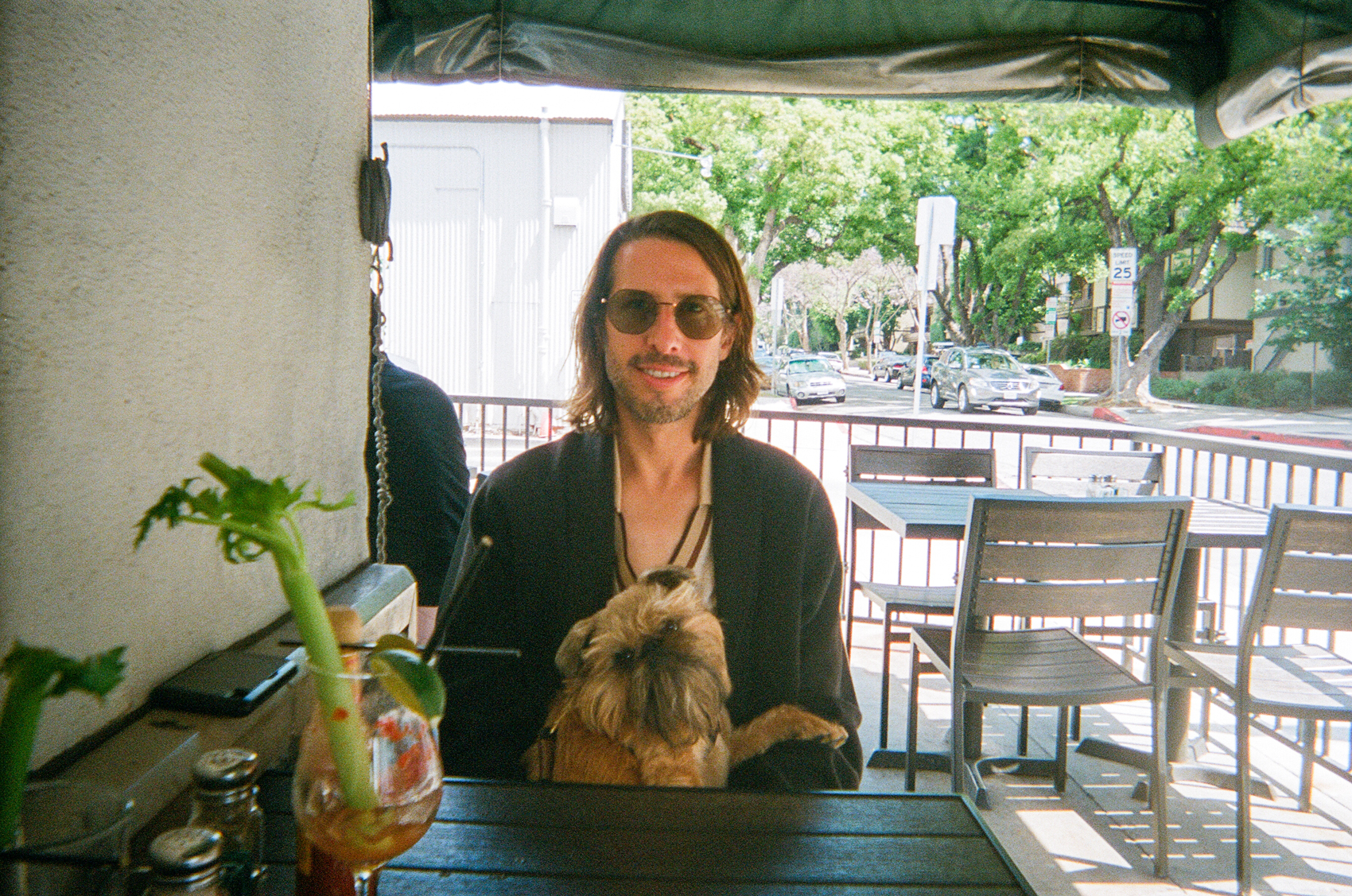
Although Stefan takes his successes in stride, his mom is exceedingly proud of him. She’s given out Janoskis to skateboarders and pedestrians on the street, and when the Vacaville Zumiez has Nike ads that feature Stefan, she’s been known to point at them as people walk by, saying, “That’s my son!”
In an industry like skateboarding, with little job security, dwindling royalty checks, and incessant competition, he’s done much better than most. The rumor about him selling his last name to Nike for millions isn’t true, but he does earn enough to live comfortably in L.A., own two Teslas, and keep a place in Miami.
Compared to Nyjah Huston’s car collection or Rob Dyrdek’s financial enterprise, Stefan lives humbly. However, Stefan has never signed cheesy endorsement deals with snack brands or action figures, or sought roles on reality TV. He’s had the skill and fortune to work exclusively with skate-related brands his entire career, something that very few well-to-do skateboarders can claim.
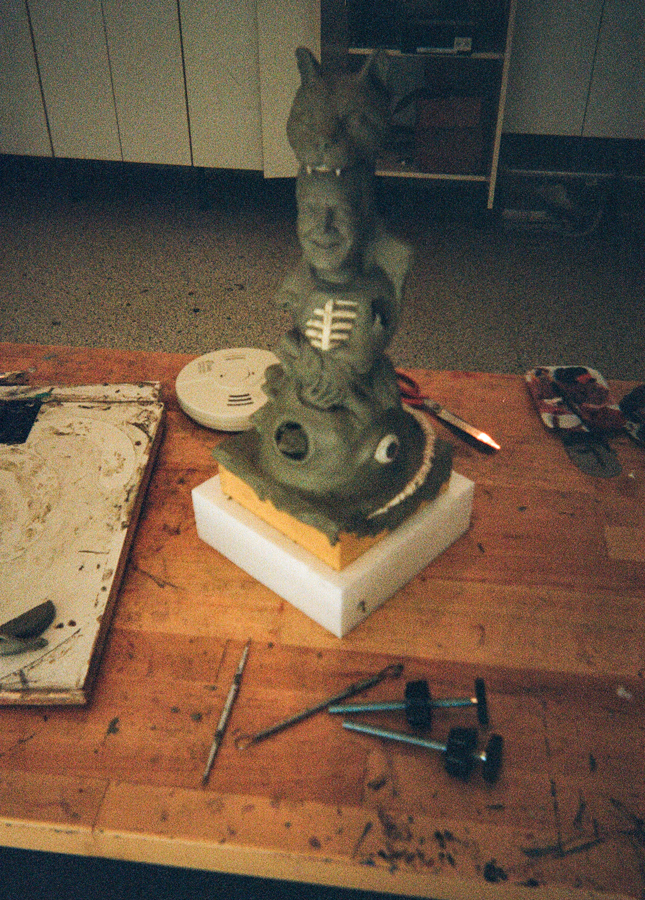
When I asked Stefan the question that any skateboarder wants to know from their favorite pros — “When’s your next video part?” — he said he didn’t know. He wants to put out another full part, but like any other successful skateboarder, his clips get sidetracked in smaller projects and ad campaigns rather than being saved for multi-year full-length videos.
As a central figure in Nike SB’s lineup, Stefan also spends a lot of time traveling for media appearances rather than skating. He may fly to Hong Kong, but instead of putting on big team demos or spending days in the streets filming, he ends up doing more autograph signings and photo ops.
Originally, I planned to focus this profile only on Stefan’s art, because I assumed he was transitioning that into his career. A lot of his former teammates are no longer actively pro skateboarders (Stefan, for example, is the only skateboarder in Mosaic who’s still on Habitat).
However, he has three key ingredients of a stable skate career (sponsorship support, continued ability on his board, and healthy personal life), so he’s in no hurry to give that up.
You can ascribe it to whatever you want — luck, skill, fate — but Stefan has achieved a career that any pro skateboarder would envy.
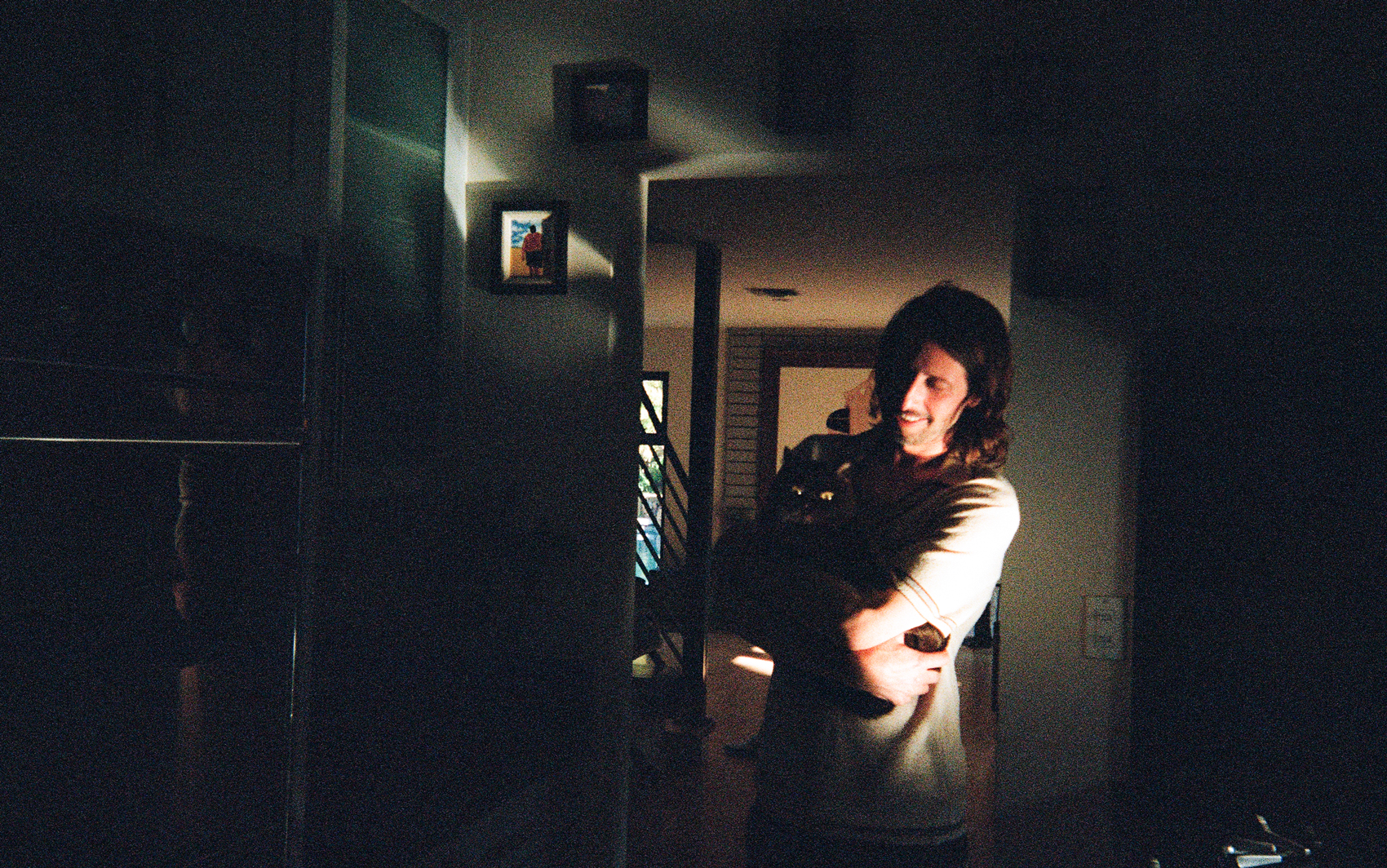
One of my favorite things about visiting Stefan’s house was discovering its many little surprises. There’s the lizard that seems to be living in his art studio/garage and the small stash of red ball gags in a kitchen cabinet, leftover from making “World Domination,” a sculpture of the earth dressed in bondage gear. There’s also the “vegan grill,” a rusted out grill in his backyard that’s now home to a nest of rats.
Understandably, Stefan is comfortable being a surprising person himself.
On my first day there, while we were sitting in his living room talking about writers that he likes, he told me about how one of his favorite science fiction authors, Robert Anton Wilson, founded a Libertarian political party called the Guns and Dope Party.
The GADP aims to unite Right-Wing gun nuts and Left-Wing cannabis advocates under the pledge, “I’ll tolerate your hobbies if you tolerate mine.” They also vow to replace 33% of the U.S. Congress with ostriches if their candidate were to ever be elected President.
Stefan doesn’t subscribe to these ideologies himself, but he finds their absurdity — or rather, the absurdities they reflect about our mainstream political parties — to be fascinating.
The very mention of something like Libertarian science fiction can be off-putting. I even felt that way when Stefan told me he doesn’t eat microwaved food on the basis that microwaves can cause cancer (an idea that the American Cancer Society disagrees with). But I don’t think Stefan reads about things like the Guns and Dope Party or Discordianism, a parody religion that, among other things, wants to outlaw catnip, because he wants to court controversy. I think it’s because he just doesn’t want to limit his curiosity.
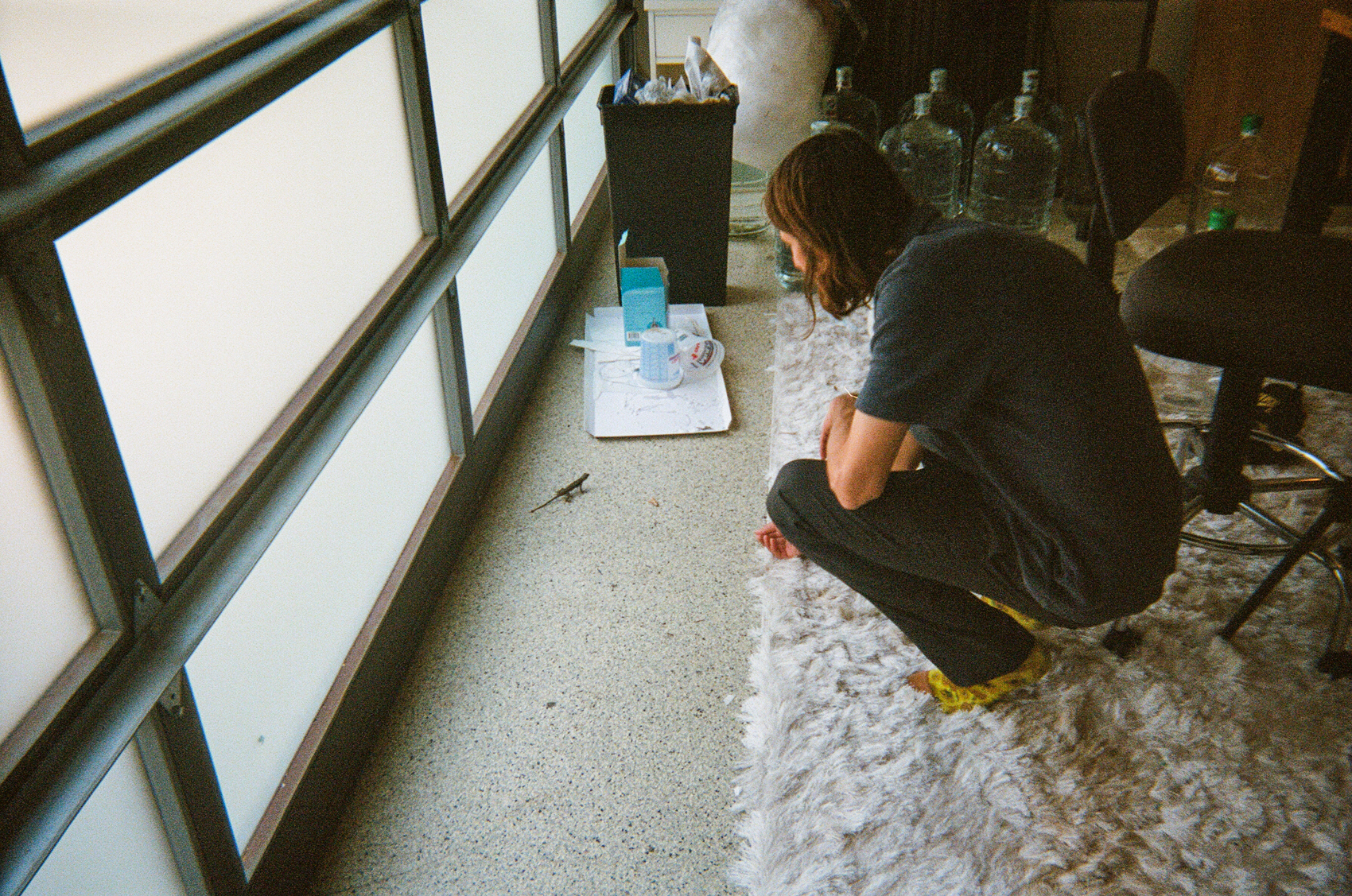
Some people seem to be born asking, “What if?” What if life doesn’t evolve unconsciously? What if Jesus took a day off work? What if Nike made a flat-toed skate shoe that didn’t look like any other Nike shoe?
Whatever gene is the “what if” gene, Stefan has it. And, importantly, he’s figured out how to wield it to his utmost advantage.
He’ll embark on new art projects partly to see whether he can finish them, and they usually turn out better than expected. Last year he released his first stop-motion film, which won several awards, and his next endeavor will likely be a Muppet-style puppet of himself. He has to learn how to make puppets first, but that won’t be a problem.
He shares this tendency with his dad, who’s had a number of careers throughout his life. First, Hank was an engineer, then a psychologist at a mental health clinic (where he worked the night shift with all the “fun cases”), and now a vineyard owner. I don’t know if having multi-disciplinary interests makes someone a better skateboarder, but I don’t think it hurts.
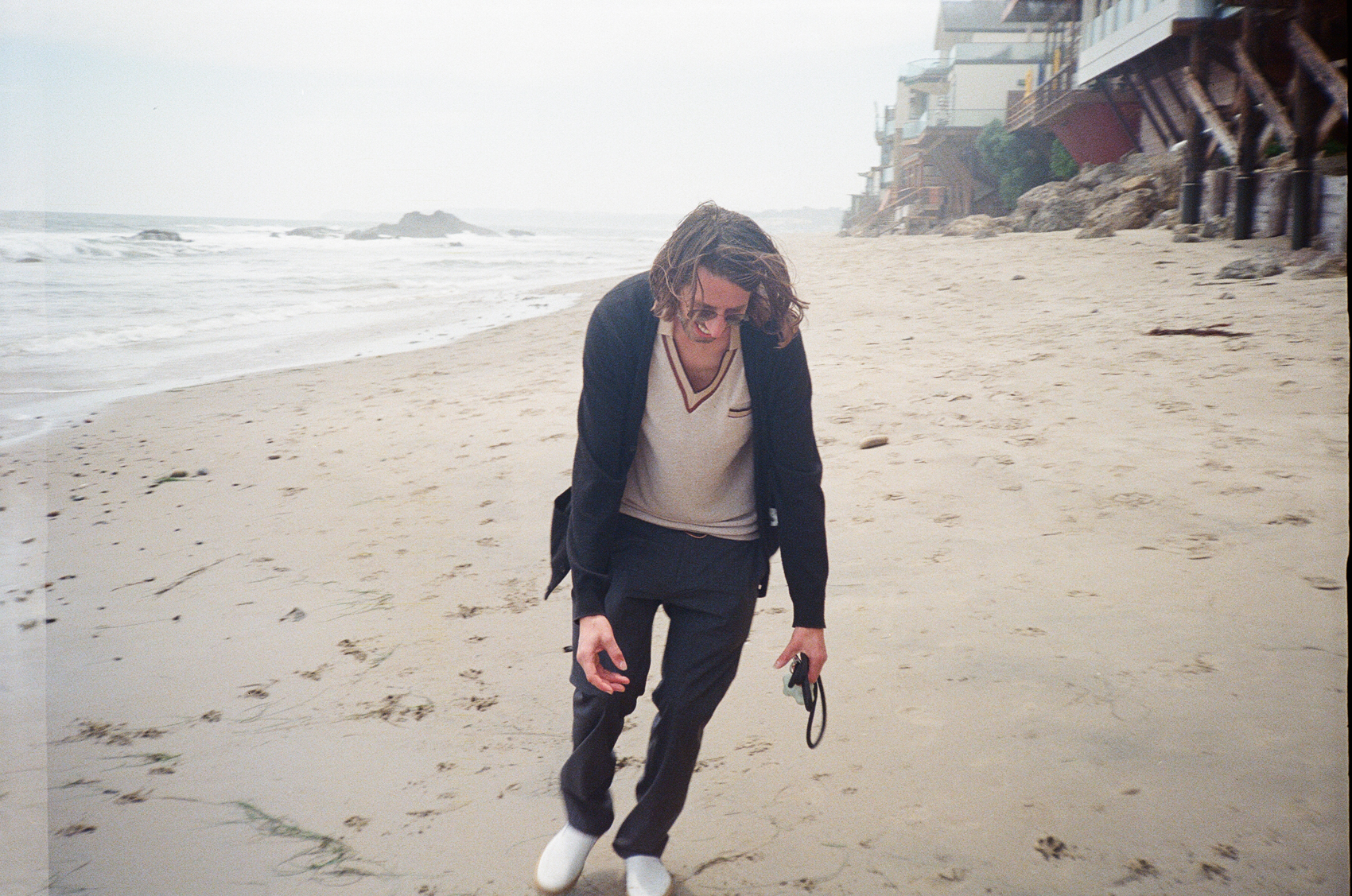
One thing that I think has helped Stefan throughout his skating and art is the high value he places on authenticity. In one conversation, he criticized artists like Jeff Koons who have teams of assistants to make their art works but don’t advertise that they aren’t the ones doing the actual painting and sculpting. For him, that lack of transparency feels egregious.
“It would be like if I told a kid, ‘Hey, put on this wig and go switch crook an out rail for me,’ so I could use that in my part,” he said.
Stefan would never try to outsource his own skate clips to a bunch of tall kids in wigs. But he also has the mind to imagine something so simultaneously funny, obnoxious, and, potentially, savvy.
From time to time, a radically open mind leads to less practical and not always straightforward ideas. Stefan once pitched Nike a commercial that would be a montage of himself continuously backside tailsliding different ledges around the world, which they declined. But sometimes the most interesting, exciting, and worthwhile ideas come from being willing to take a leap with your curiosity and see where you end up. It might not be someplace familiar, but at least it’ll be different.
Related Posts
Comments
Popular
-
 RECONTEXTUALIZING ZAK ANDERS, ONE OF TODAY’S MOST MYSTIFYING SKATERS
RECONTEXTUALIZING ZAK ANDERS, ONE OF TODAY’S MOST MYSTIFYING SKATERS
"I don’t want to be this brutal punk that hates everything that people like, and I’m trying really hard to undo that."
-
 RARELY SEEN PHOTOS FROM READ AND DESTROY, THE BELOVED BRITISH SKATE MAG
RARELY SEEN PHOTOS FROM READ AND DESTROY, THE BELOVED BRITISH SKATE MAG
Check out early documentation of London's Southbank, vert ramps tucked into Lord of the Rings-level forests, and everything in between.
-
 NAVIGATING SKATING’S HIGHS AND LOWS WITH MATT MILITANO
NAVIGATING SKATING’S HIGHS AND LOWS WITH MATT MILITANO
Over coffee and cigarettes Matt talks prank shows, ABDs and his love for the VX.
-
 A CHAT WITH LUDVIG HAKANSSON, THE OLDEST SOUL IN SKATEBOARDING
A CHAT WITH LUDVIG HAKANSSON, THE OLDEST SOUL IN SKATEBOARDING
The man loves to read Nietzche, skates in some expensive vintage gear, and paints in his own neoclassical-meets-abstract-expressionist style.
-
 MEET THE SEATTLE ARTIST WHO DESIGNED A BACON ’N EGGS INSPIRED SKATEPARK
MEET THE SEATTLE ARTIST WHO DESIGNED A BACON ’N EGGS INSPIRED SKATEPARK
Breakfast-obsessed skaters rejoice!

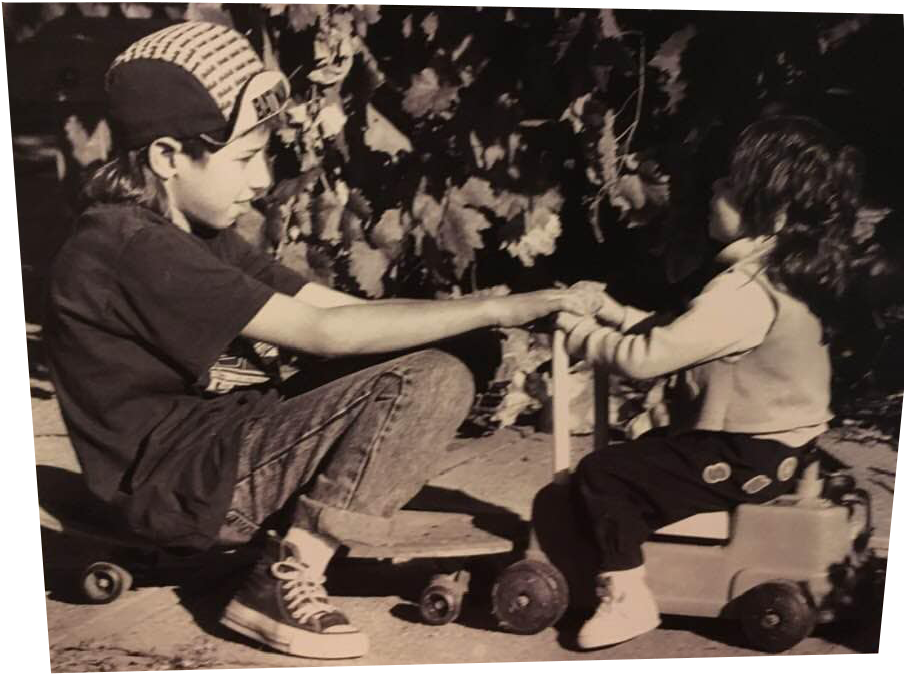
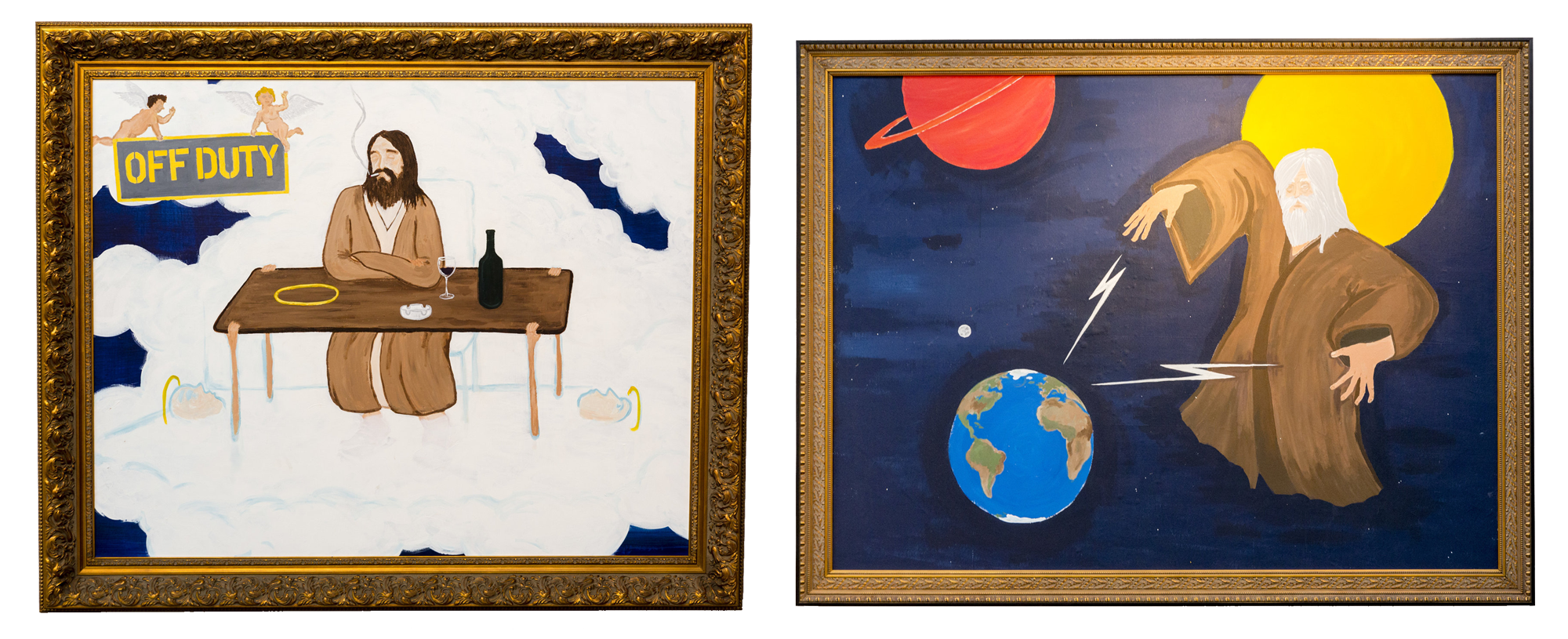
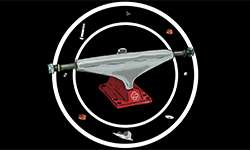
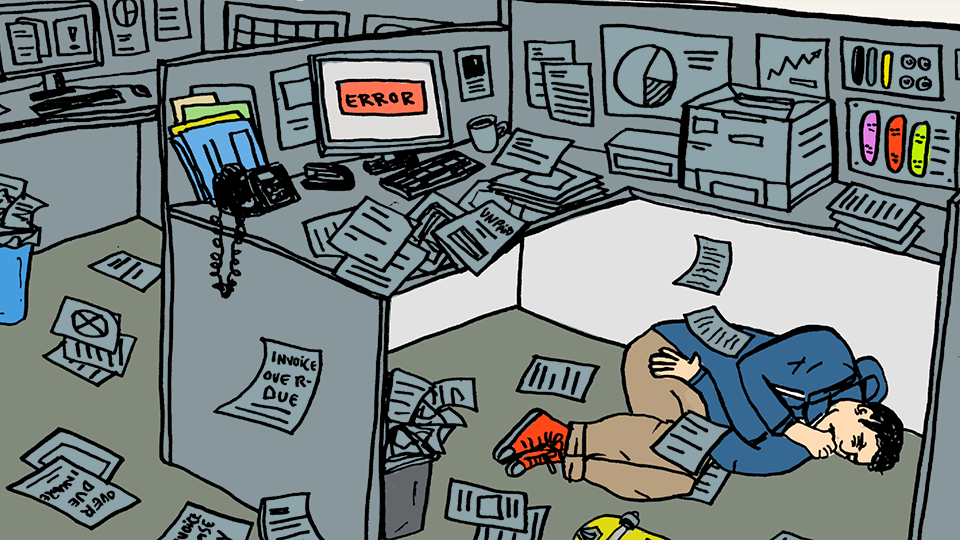
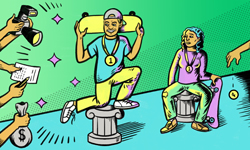
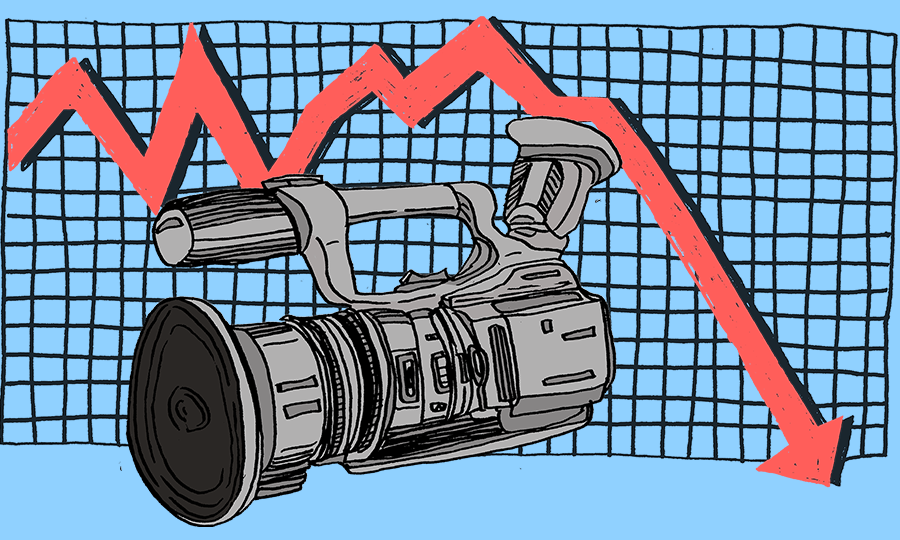
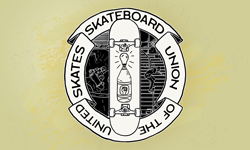
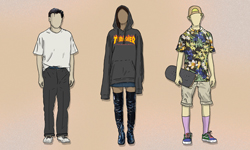
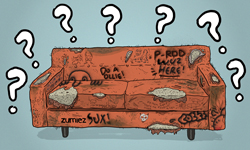
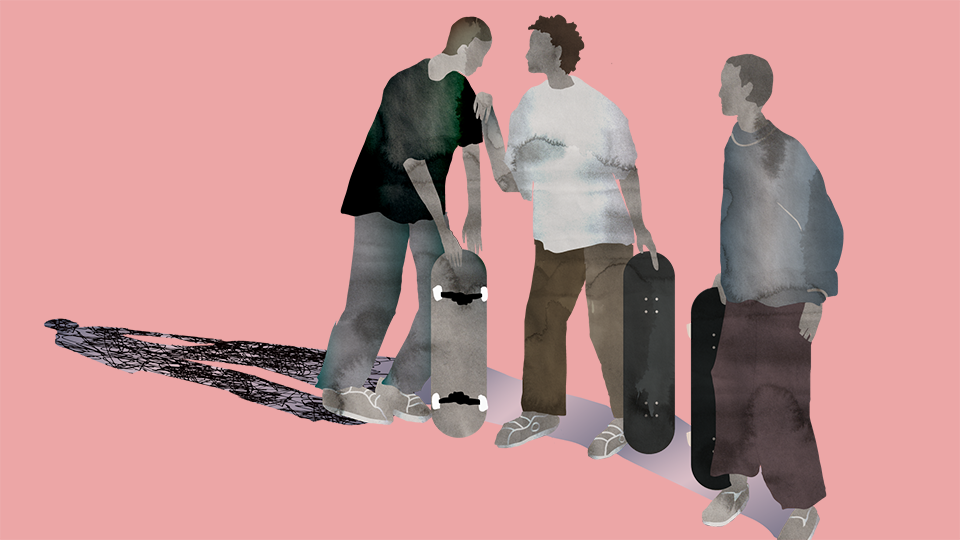
July 23, 2019 3:21 pm
Excellent work with a longer-form piece. Fill the void
July 23, 2019 3:24 pm
fucking well written article. its interesting to know more about one of the most famous skaters that we have nowadays, and seeing him as a person and artist.
really inspiring.
great pictures btw
July 23, 2019 4:28 pm
soho house, malibu, teslas, doesn’t believe in time.
but also, “the high value he places on authenticity”
July 23, 2019 6:23 pm
You do not even know what will happen tomorrow! What is your life? You are a mist that appears for a little while and then vanishes.
July 25, 2019 2:42 pm
he said ur a fart in the wind buddy
July 1, 2021 5:26 am
Exactly
July 23, 2019 5:48 pm
Great article!
July 24, 2019 10:37 am
great piece
July 24, 2019 2:23 pm
great piece of article